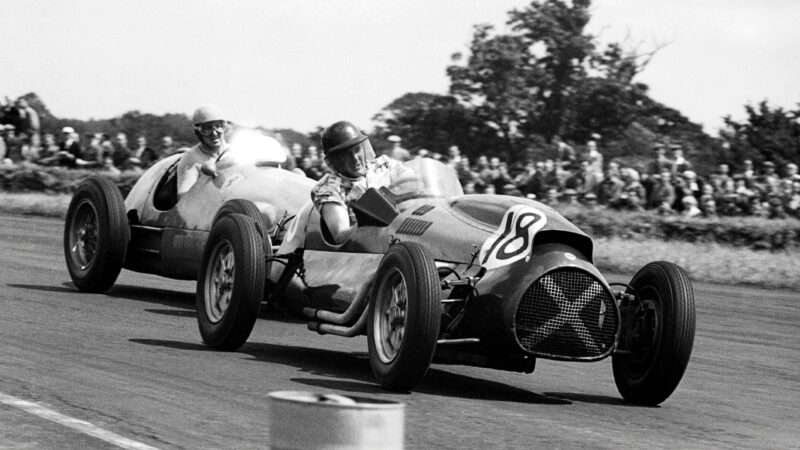It was not like being asked to join a team nowadays. Dumbuck Garage had stumped up for the Healey, and the way team patron David Murray worked, it had to stump up for a C-type Jaguar, painted in the team livery of metallic blue and under Murray’s direction. In ’53 one of the advantages of being with Ecosse was that you qualified for the latest factory tweaks such as disc brakes.
With it, Jimmy enjoyed success, not quite the run of victories that his (unrelated) contemporary Ian Stewart had in 1952 with Ecosse’s XKC 006, but he had two wins at Thruxton, second places at Charterhall and lbsley, and two thirds at Snetterton. He had a full season driving XKC 041, KSF 181, and he finished second with John Lawrence at the Nürburgring, in another of the team’s C-types, in addition to three more good wins at Goodwood. He was doing National Service at the time, getting leave with the help of a compliant CO.
Jimmy’s career then stalled at Le Mans in 1954 when he crashed one of John Wyer’s Aston Martin DB3S Coupés. The ascetic Wyer was put out when his new driver told him during practice he wished he were in a C-type. Jimmy wrote the Aston off at White House, shattering an arm that doctors told him he might lose if he did it again.
In 1955, invited into the works Jaguar team for the Daily Express production car race at Silverstone, he finished second to Mike Hawthorn in one of the aluminium Mk VlIs. Lofty England wrote inviting him to drive at Le Mans with Hawthorn, “because I believe the pair of you can match the speed of Fangio and Moss in the Mercedes.”
But it was not to be; at the Nürburgring in May 1955 he crashed his D-type, XKD501. Jimmy was trapped upside down in it, drenched in petrol, and because the hedge closed up again after he went through it, it was some time before rescuers found him.
After this second accident, combined with the fact that Jimmy’s mother never liked him racing, he gave it up. He always hoped that Jackie might carry on where he had left off, and when the time came to set the lap speeds at Oulton, Jimmy was part of the conspiracy to conceal the venture from their mother.

